
Gympie North railway station is located on the North Coast line in Queensland, Australia. It serves the town of Gympie.
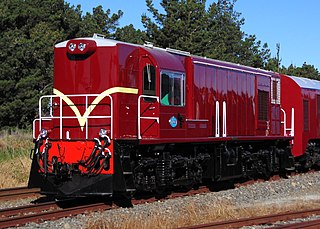
The New Zealand DI class locomotive was a class of diesel-electric locomotive in New Zealand. They were built by English Electric at their plant in Rocklea, Queensland in Australia. The class is very similar to the Queensland Railways 1620 class locomotives. At the time of their introduction, the class was seen as an alternative to the DB class for use on lightly laid secondary and branch lines, more so in the South Island. The World Bank financed introduction of the Japanese built DJ class in 1968, which ensured that no further DI class locomotives were purchased by New Zealand Railways.

The Mary Valley Rattler is a heritage railway line that conducts steam train trips and tours from Gympie through the Mary Valley using the former Mary Valley railway line in the Gympie Region, Queensland, Australia. It is now one of the region's biggest tourist attractions and is managed by a not-for-profit organisation. It has been described as Australia's third biggest heritage railway. It was shut down for safety reasons in 2012. In 2016, the Gympie Regional Council provided funding to make the railway operational again as it is a major tourist attraction for the area. Journeys recommenced between Gympie and Amamoor on 6 October 2018.

The Queensland Railways C17 class locomotive are a class of 4-8-0 steam locomotives operated by the Queensland Railways.
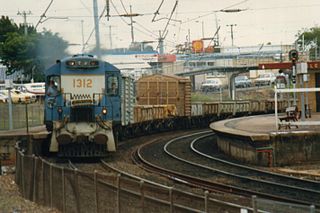
The 1300 class were a class of diesel locomotive built by English Electric, Rocklea for Queensland Rail between 1967 and 1972. They were later sold to AN Tasrail.
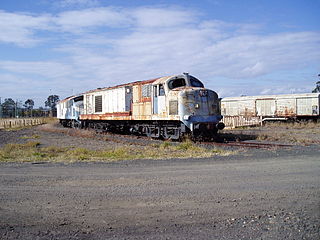
The 1200 class were a class of diesel locomotive built by English Electric, Bradford for Queensland Railways in 1953–1954.

The GT42CU ACe is a model of diesel electric locomotives manufactured by EDi Rail, Maryborough between 2007 and 2013 under licence from Electro-Motive Diesel, for use on narrow gauge railways in Queensland, South Australia and Western Australia.
The Queensland Pioneer Steam Railway is located near Ipswich, Queensland, Australia and runs through the former West Moreton pioneering coal fields. It was first opened in 1881 by colliery proprietor and politician Lewis Thomas (1832-1913) as a tramway to his coal mines.

The Queensland Railways A10 Neilson class locomotive was a class of 0-4-2 steam locomotives operated by the Queensland Railways.

Gympie railway station is an Australian heritage-listed former railway station in Gympie, Queensland, on the North Coast line. It was the primary railway station serving Gympie from 1881 until 1989.

The G class were a class of diesel locomotives built by English Electric, Rocklea for the Midland Railway of Western Australia in 1963. They were later sold to the Western Australian Government Railways.

The C class are a class of diesel locomotives built by English Electric, Rocklea for the Western Australian Government Railways in 1962.
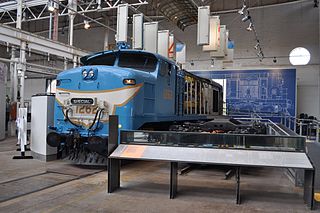
The 1250 class were a class of diesel locomotive built by English Electric, Rocklea for Queensland Railways between 1959 and 1963.
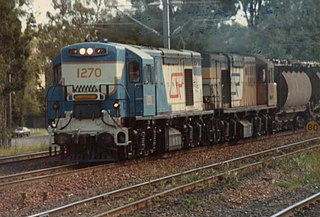
The 1270 class were a class of diesel locomotive built by English Electric, Rocklea for Queensland Railways between 1964 and 1966.
The D35 class are a class of diesel locomotives built by English Electric, Rocklea for Australian Iron & Steel's, Port Kembla steelworks between 1971 and 1975.

The 1600 class was a class of diesel locomotives built by English Electric, Rocklea for Queensland Railways between 1962 and 1964.

The 2350 class were a class of diesel locomotive built by English Electric, Rocklea, for Queensland Railways in 1973–1974. All were later sold to AN Tasrail.
The 2370 class were a class of diesel locomotive built in 1975 by English Electric, Rocklea for Queensland Railways in Australia. All were later sold to AN Tasrail along with the 2350 class, and reclassified as the ZB class. The sole survivor, now numbered 2128 is now preserved at Don River Railway
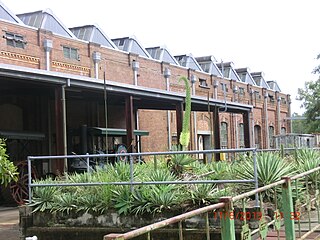
The Queensland Museum Rail Workshops is a railway museum in Ipswich, Queensland, located within the former North Ipswich Railway Workshops and tells the story of more than 150 years of railways in Queensland. Exhibits are spread out across a number of the complex's original buildings housing a collection of historic steam and diesel locomotives and other rolling stock that operated on Queensland Railways, as well as general interest exhibits and ones tailored specifically for children.

















